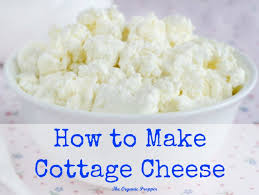
Breaking News
 2 Hours of Retro Sci-Fi Christmas Songs | Atomic-Age Christmas at a Snowy Ski Resort
2 Hours of Retro Sci-Fi Christmas Songs | Atomic-Age Christmas at a Snowy Ski Resort
 Alternative Ways to Buy Farmland
Alternative Ways to Buy Farmland
 LED lights are DEVASTATING our bodies, here's why | Redacted w Clayton Morris
LED lights are DEVASTATING our bodies, here's why | Redacted w Clayton Morris
Top Tech News
 Travel gadget promises to dry and iron your clothes – totally hands-free
Travel gadget promises to dry and iron your clothes – totally hands-free
 Perfect Aircrete, Kitchen Ingredients.
Perfect Aircrete, Kitchen Ingredients.
 Futuristic pixel-raising display lets you feel what's onscreen
Futuristic pixel-raising display lets you feel what's onscreen
 Cutting-Edge Facility Generates Pure Water and Hydrogen Fuel from Seawater for Mere Pennies
Cutting-Edge Facility Generates Pure Water and Hydrogen Fuel from Seawater for Mere Pennies
 This tiny dev board is packed with features for ambitious makers
This tiny dev board is packed with features for ambitious makers
 Scientists Discover Gel to Regrow Tooth Enamel
Scientists Discover Gel to Regrow Tooth Enamel
 Vitamin C and Dandelion Root Killing Cancer Cells -- as Former CDC Director Calls for COVID-19...
Vitamin C and Dandelion Root Killing Cancer Cells -- as Former CDC Director Calls for COVID-19...
 Galactic Brain: US firm plans space-based data centers, power grid to challenge China
Galactic Brain: US firm plans space-based data centers, power grid to challenge China
 A microbial cleanup for glyphosate just earned a patent. Here's why that matters
A microbial cleanup for glyphosate just earned a patent. Here's why that matters
 Japan Breaks Internet Speed Record with 5 Million Times Faster Data Transfer
Japan Breaks Internet Speed Record with 5 Million Times Faster Data Transfer
How to Make Homemade Cottage Cheese

Cottage cheese is one of those things that has far more ingredients than it should when you buy it at the store. Homemade cottage cheese is creamy, fluffy, and delicious, and it's made with only 3 simple ingredients:
organic milk
white vinegar
salt
To compare, here are the ingredients of a common brand of cottage cheese sold at the grocery store:
Cultured Fat Free Milk, Buttermilk, Nonfat Dry Milk, Cream, Salt, Citric Acid, Lactic Acid, Phosphoric Acid, Natural Flavoring, Guar Gum, Mono and Diglycerides, Xanthan Gum, Carob Bean Gum, Titanium, Dioxide(artificial color), Maltodextrin, Cultured dextrose, Potassium Sorbate, Calcium Chloride, Enzymes
If you want to purchase organic cottage cheese, the ingredients will be better but the price will go up dramatically. But make it at home and the price is far lower. If your milk has just expired, but not turned totally funky, cottage cheese is a good way to use it up.
This recipe is for pasteurized milk from the store. If you are making cottage cheese with raw milk, go here to learn how – the process is different.
Ingredients:
2-1/2 cups of 2% or whole milk
1/4 cup of white vinegar
dash of salt (optional – it's just for flavor)
Tools:
Large heavy bottomed pot
Flour sack towel (I use these in the kitchen constantly!)
Directions:
1.) In a large saucepan bring the milk almost to a boil. You want it to be a minimum of 185 degrees on an instant read thermometer like this one. (It's a small investment, but an important one for making homemade organic dairy products.) As soon as bubbles begin to rise to the top, remove the saucepan from the heat.
2.) Immediately stir in the white vinegar and the salt (if using). You will see the milk begin to curdle immediately.
3.) Allow the mixture to cool completely – about 1 hour at room temperature.
4.) Line a strainer with a flour sack towel, set it in a large bowl, and separate the curds and the whey (hints of Little Miss Muffet!) by pouring your curdled milk into the strainer. Keep the whey for other uses (discussed below).

 $100 SILVER CONFIRMED?
$100 SILVER CONFIRMED?

